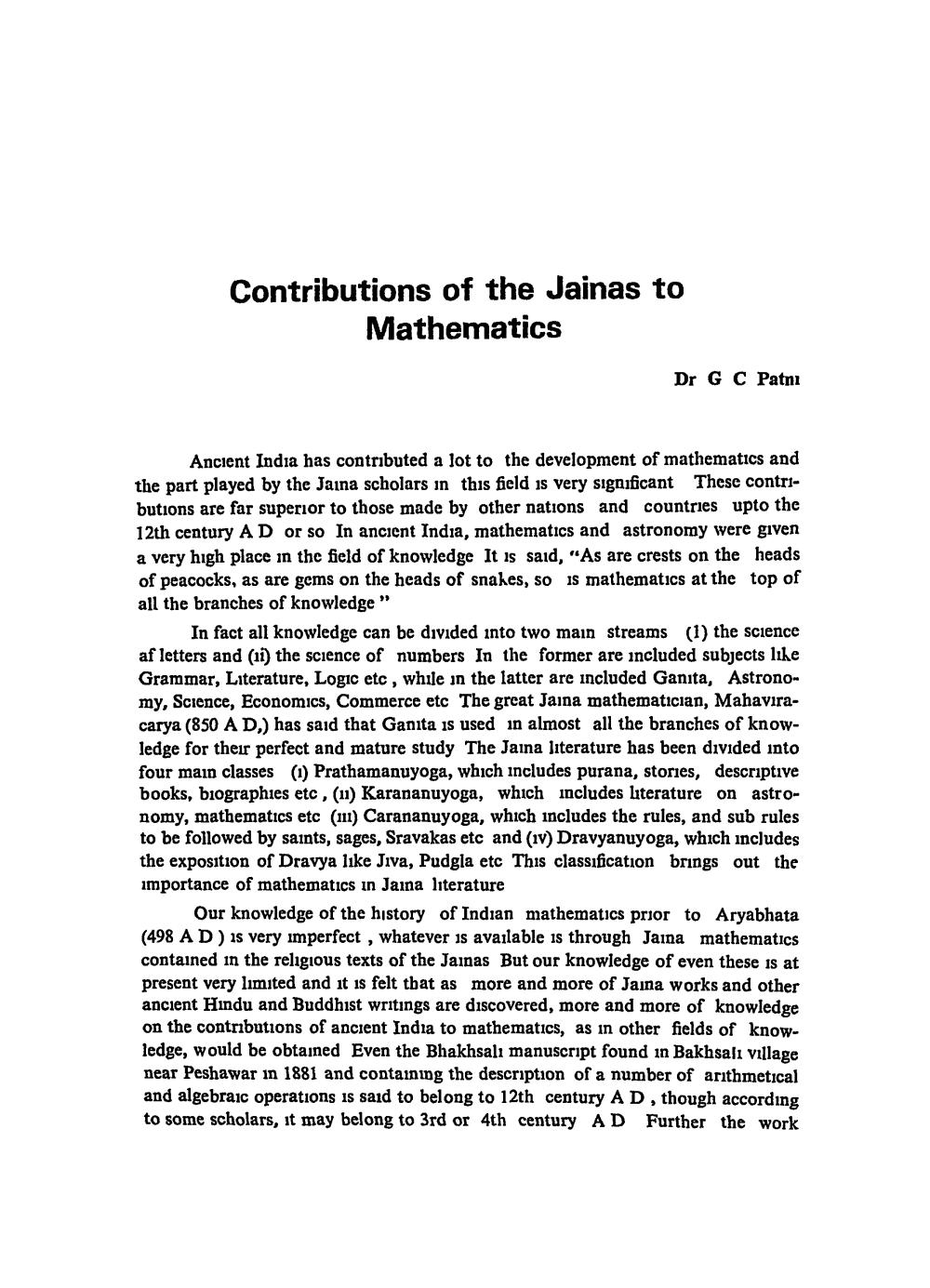________________
Contributions of the Jainas to
Mathematics
Dr G C Patni
Ancient India has contributed a lot to the development of mathematics and the part played by the Jaina scholars in this field is very significant These contributions are far superior to those made by other nations and countries upto the 12th century AD or so In ancient India, mathematics and astronomy were given a very high place in the field of knowledge It is said, "As are crests on the heads of peacocks, as are gems on the heads of snakes, so is mathematics at the top of all the branches of knowledge"
In fact all knowledge can be divided into two main streams (1) the science af letters and (11) the science of numbers In the former are included subjects like Grammar, Literature, Logic etc, while in the latter are included Ganita, Astronomy, Science, Economics, Commerce etc The great Jaina mathematician, Mahaviracarya (850 A D) has said that Ganita is used in almost all the branches of knowledge for their perfect and mature study The Jaina literature has been divided into four main classes (1) Prathamanuyoga, which includes purana, stories, descriptive books, biographies etc, (11) Karananuyoga, which includes literature on astronomy, mathematics etc (111) Carananuyoga, which includes the rules, and sub rules to be followed by saints, sages, Sravakas etc and (iv) Dravyanuyoga, which includes the exposition of Dravya like Jiva, Pudgla etc This classification brings out the importance of mathematics in Jaina literature
Our knowledge of the history of Indian mathematics prior to Aryabhata (498 A D) is very imperfect , whatever is available is through Jaina mathematics contained in the religious texts of the Jainas But our knowledge of even these is at present very limited and it is felt that as more and more of Jaina works and other ancient Hindu and Buddhist writings are discovered, more and more of knowledge on the contributions of ancient India to mathematics, as in other fields of knowledge, would be obtained Even the Bhakhsalı manuscript found in Bakhsalı village near Peshawar in 1881 and containing the description of a number of arithmetical and algebraic operations is said to belong to 12th century AD, though according to some scholars, it may belong to 3rd or 4th century AD Further the work




